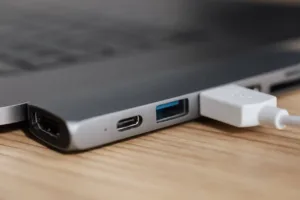Originally published on LinkedIn and THNHIMSS by Karen Clark. This has been edited for clarity.
We all know that physicians are experiencing burnout. But burnout isn’t isolated solely to physicians. The past nine years of turmoil have affected all clinical providers, staff, and administrators.
Acts and Requirements

It began with the passage of the HITECH Act in 2009, followed by the Affordable Care Act in 2010. The EHR Incentive program and Meaningful Use requirements began in 2011 and 2012, with Stage 1 followed by Stage 2 in 2013 and Stage 3 in 2014.
In 2015 Congress passed the MACRA legislation and replaced/re-labeled Meaningful Use with Alternate Payment Methods and MIPS. Although many of these changes were well-intentioned, with reductions in requirements or flexibility in reporting, the net effect in the trenches has been a re-tooling of workflows and retraining of clinical staff every single year since 2010.
Adapting to New Technology

Medical practices have been forced to adapt to new technology and completely redesigned workflows at a pace they were not ready for, coupled with data collection requirements that often had no relevance to their patient treatment.
Almost universally, practice employees agree that most EHR software is clumsy and difficult to use. The reason lies largely in the HITECH ACT requirement for certification.
EHRs that were not federally certified could not participate in the EHR Incentive Program, so EHR vendors faced a “certify or die” scenario. All the development effort went to meeting the thousands of pages of requirements instead of usability.
Continual changes to the certification requirements kept our vendors focused on losing their certification, not on the user experience.
Additionally, vendors tried to cover all bases — from primary care to all the various specialties. As a result, none of them did particularly well. Practices, eager to avoid additional costs, looked for one solution that would meet all of the requirements. Just as a Swiss Army knife screwdriver is fine for one small job, but an inadequate tool if you are a carpenter, many specialists struggle with software that only scratches the surface of their needs.
We may have missed some significant changes while managing this disruption and still running a medical practice. We may be at an inflection point, and it’s time to examine those.
Reevaluating What’s Collected and Why

In many practices, the original data collection and Core Measures from Meaningful Use are baked into patient intake forms and staff training materials, long after the requirements ended. Flu shots, anyone? It’s time to identify these old workflows and reexamine them.
How do we approach this? Look at each element of data. Is it required for patient care? Is it required for billing or compliance? If not, take a hard look at why you are collecting it.
Additionally, clinicians have provided appropriate pushback against canned notes. In many cases, the narrative story does a much better job of telling the patient story.
With the advance of speech recognition and natural language processing, it’s time to harness the technology that allows us to return to a more meaningful note.
The Age of Interoperability

The answer to reducing burnout and making EHR technology easy for clinical use lies in API technology. Application Programming Interfaces (API, required by the EHR Certification standards) allow other applications to read and write to the EHR database. We’re moving out of the era of EHR implementation and adoption and into the era of interoperability.
We need to examine critical functions in our practice and use purpose-built tools that are designed with the end-user (not CMS) in mind.
For example, a mobile app that manages the ten tasks a physician does — and only those ten — with a design and function so fast and so intuitive that no user manual or four-hour training session is needed.
We all use “transparent” technology daily when checking in for our flight, ordering an Uber, or reserving a table at a restaurant. The ease with which technology can be enabled to do a specific task while making the technology itself transparent is what makes these applications so simple and easy to use.
Patient Use

And it’s not just our clinicians. Our patients also want full mobile access, and not just a Patient Portal. They want to be able to make an appointment, pay a bill, request a medication refill, or ask a question with ease.
This means that your EHR really evolves from an application that does everything for everyone into a database that stores clinical data from a variety of API-enabled applications that let your clinicians work better and faster.
When Shopping for Your Next EHR

This means that how you shop for and price an EHR varies dramatically. There’s a significant difference between buying a database or data warehouse application and buying a fully functional user application that meets all of your needs.
As for cloud-based vs. on-premises, once you have an ecosystem that supports your providers, staff, and patients, you can choose the best location to house it. Don’t let storage drive the function.
In closing, I think we need to ask the right questions, help our vendors understand what we need, and demand excellence in application for our providers. Let’s focus on the patient and the process and not the technology. We’ll know we have the tech right when it becomes invisible.
- Sari Nossbaumhttps://www.surgimate.com/author/sari/
- Sari Nossbaumhttps://www.surgimate.com/author/sari/
- Sari Nossbaumhttps://www.surgimate.com/author/sari/
- Sari Nossbaumhttps://www.surgimate.com/author/sari/




